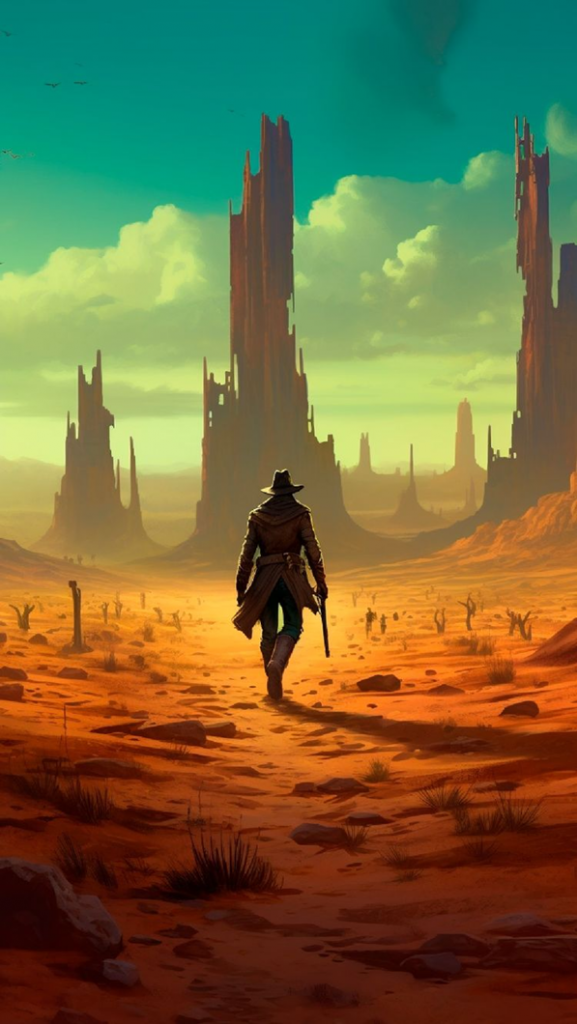Some material on this page also appears in Chapter 410 of the Orange Book of the Kristang people.
Although the Kristang have never technically been cowboys, cowgirls or cowhands, this archetype recurs very strongly within our culture as the primary representation of Death Themselves, or Sinyorang Morti, or the primary way in which Death Themselves often appears to us as Kristang people.

Culture-internally, the cowboy represents Death because as mentioned, it is the ultimate reduction of Kristang identity: to a stereotype that actually technically has very little to do with us, and which, in itself, carries all the painful associations of erasure, over-conflation with Western or European culture and identity, and a performativity so alien to our actual roots that yet is the only way we are ‘allowed to be’ seen, especially in Singapore. However, we have creolised this misrepresentation such that it is now correct to represent Kristang people as Cowboys, Cowgirls or Cowhands, because this archetype represents how we see Death Themselves, and how the Kristang also have transcended Death by subverting and creolising this archetype and making it our own too. You want us to be cowboys? Very well. We shall be Kristang cowboys like no other.

Culture-externally, therefore, this also makes sense why the archetype ‘calls’ to Kristang people (and Kristang men in particular); on a species-scale, we as a culture and people are also Death in inter-cultural/ethnic form, demanding a transformation, reinvigoration and overhaul of outdated and antiquated ways of thinking, being, feeling and living wherever we go. Only we can play this role because of what Kristang is. This is why we are the Jenti di Fing, the Last People. This is why many of our metaphors deal with baka (cows) and brufa (buffaloes or bulls). This is why our entire culture is what it is. As Lil Nas X did for music, and the archetype of the gunslinger or lone wolf does in many myths, legends, science fiction and fantasy stories, the Kristang kauboi on a species level is very often the herald of the apocalypse, the one outside or the one on the fringes of society who is still a part of it and here to transform it.

The strength and tenacity of the cowboy archetype, and its perseverance and resilience in all forms of Kristang culture, is also a very strong indicator of our role in the collective unconscious: when we are individuated, our culture itself is a very strong site for not just individuation (through the Osura Pesuasang) but transfiguration (through the Osura Spektala) and access to the effective forms of mortal immortality and transcendence that are embodied in Uncertainty Thinking.

This also helps us explain and rationalises why we were oversexualised and hyperobjectified by others, especially Europeans: what they really were unconsciously noticing in us (and what many people still unconsciously notice in us) is how we can help them individuate through performance and through healthy forms of ego-Death that challenge them to grow. When we take on the cowboy archetype in a Kristang Spektala or performance, we become Death, exactly that destroyer of worlds that Oppenheimer kept mentioning. Any healthy Kristang person will tell you we are always performing (or at least always feel like we are performing), and so we can become Death anywhere, as long as we are asked to perform (= and especially in situations where we are made to feel like we are inferior, or not real, or invented, or fake). Our liminality as expressed through our body, mind, heart and soul, opens the door to the personal and collective unconscious, and allows everyone else who is part of the Spektala or performance space we are in to also individuate and/or be transfigured at long last.

Pictures on this page were taken from eBay on Pinterest, bythevay on Pinterest, devath on Pinterest, and Horace Sweat on Pinterest.
